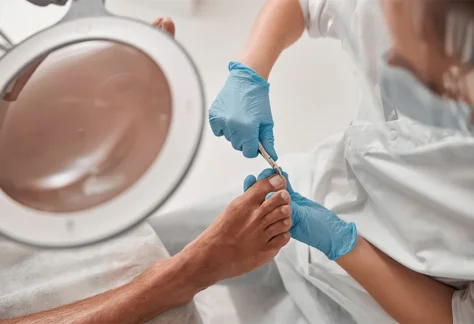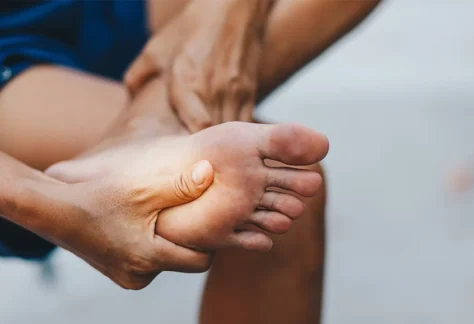In This Article:
- Substance use disorders alter the brain’s reward system. Risk factors include genetics, environment, mental health, gender, ethnicity and culture.
- Warning signs of addiction include using more than intended, prioritizing the substance above your work, home or social life and using substantial time to secure, utilize and recover from the substance — among many others.
- Substance use disorder treatment methods include medication, cognitive behavioral therapy, motivational interviews, group support and non-clinical interventions.
Did you know more than 20 million Americans struggle with substance abuse? Let’s explore the science behind this condition, as well as substance use disorder treatment, risk factors and warning signs. By educating ourselves, we can work to eliminate surrounding those who struggle with addictions and instead get them the medical help they need.
How Does Addiction Work?
Addiction is an increasingly common mental disease that affects the brain’s reward circuit by flooding it with dopamine. Without substances, we find a healthy supply of dopamine in everyday things — like spending time with loved ones, having a hobby or eating our favorite food. For a person who is non-dependent, these are among the most rewarding aspects of life.
When we rely on drugs or alcohol for our dopamine source, we start to require those substances to generate that same amount of pleasure. With addiction, the everyday things that once brought us joy seem mundane compared to the substances we crave. And, as we build up tolerance to these substances, we require more and more of them to get that same “euphoric” feeling. Over time, substance abuse can lead to impaired learning, judgement and decision-making abilities, as well as serious mental and physical health problems.
Risk Factors of a Substance Use Disorder
Some people can drink moderately in social settings without issue, while others fall victim to alcoholism. So, what makes someone more susceptible to addiction? It’s impossible to pinpoint exactly what leads to a substance use disorder, but there are certain risk factors that may have an influence, including:
- Genetics: your genes account for more than half of your risk of addiction
- Early exposure to drugs: peer pressure, thrill seeking and fitting in are common roots of addiction
- Mental health problems like depression and anxiety
- Socio-economic factors
- Gender: men tend to be more susceptible
Are Some Drugs More Addictive Than Others?
All substances affect your brain’s reward circuit, but some are more potent than others. Cocaine, methamphetamine and heroin, for example, are more addictive than marijuana and alcohol. However, people who begin drinking early are four times more likely to acquire an alcohol use disorder compared to those who wait until age 21.
The “gateway drug” concept is no myth. Users almost always experiment with marijuana, alcohol or tobacco before they move on to harder substances. Some people become addicted after a single dose; others experience a more gradual progression. This is why it’s so important to avoid risky substances altogether, because there’s no way to determine what your outcome could be in the long run.
Most Frequently Abused Substances in Arizona
The commonly abused substances in Arizona are listed below. It’s important to note that our state is currently undergoing a deadly fentanyl and opioid crisis at a higher rate than most of the country.
- Nicotine
- Alcohol
- Marijuana
- Prescription Pain Killers
- Stimulants (Methamphetamine, Cocaine)
- Opioids (Fentanyl, Heroin)
Warning Signs of a Substance Use Disorder
Are you concerned that you or someone you know has a substance use disorder? Look for these signs.
- Using more substances than planned, i.e., you only wanted one beer but ended up having six.
- Wishing you could cut down but finding yourself unable to stop.
- Constantly thinking about the substance.
- Planning your schedule around the substance.
- Prioritizing the substance more than your home, work or social life.
- Using a significant amount of time to secure, utilize and recover from the substance.
Be sure to speak with your care provider if you relate to one or more of the warning signs above so you can get a proper diagnosis and recovery plan.
Substance Use Disorder Diagnosis
Your doctor will use diagnostic screening tools and criteria from the DSM-5 handbook to measure the prevalence of your use. When you are evaluated, be honest. Medical professionals won’t contact law enforcement unless absolutely necessary — they are far more concerned about getting you help.
Substance Use Disorder Treatment
Treatment comes in a variety of forms. Here are a few of the most common and effective:
- Medications are used to ease withdrawal symptoms and combat cravings during the initial detox.
- Cognitive behavioral therapy (CBT) focuses on changing mental distortions and behaviors, improving emotional regulation and developing personal coping strategies.
- Motivational interviewing helps psychiatrists determine how willing and capable someone is to address the challenge.
- Supportive counseling often comes in the form of small groups, where like-minded individuals can relate to those struggling with similar problems.
- Non-clinical interventions like Rational Recovery, the 12-Step Practice and other harm reduction plans have also proven effective.
The Detox Process
Detox is the process of a substance leaving a person’s body, and some substances are easier to discontinue. The most worrisome are alcohol and benzodiazepines, which can be deadly if not monitored by a medical professional. Opioids have the most uncomfortable withdrawal symptoms but aren’t deadly to detox without assistance. Most detoxes take at least a week, depending on the substance, the amount used and the duration of use. Talk to your Valleywise Health provider before starting any substance detox.
How to Approach Someone Who Is Struggling
It’s important to view addiction as a disease rather than a lack of judgement or a poor choice. Before approaching someone you love about seeking substance use disorder treatment, first educate yourself on their particular challenge. For example, the opioid recovery process will look much different than alcohol recovery. From there, provide compassionate, yet practical, support. With the right encouragement, therapy and medication, anyone can overcome their battle with addiction and live a longer, healthier life.
Sources:
- https://americanaddictioncenters.org/rehab-guide/addiction-statistics
- https://pubs.niaaa.nih.gov/publications/AA67/AA67.htm#:~:text=People%20who%20reported%20starting%20to,in%20their%20lives%20(9)
- https://www.recoveryanswers.org/research-post/1-in-10-americans-report-having-resolved-a-significant-substance-use problem/#:~:text=There%20are%20approximately%2020%20million,with%20a%20substance%20use%20disorder.&text=In%20response%2C%20thousands%20of%20studies,this%20enormous%20public%20health%20problem.
- https://www.azdhs.gov/prevention/womens-childrens-health/injury-prevention/opioid-prevention/index.php
- https://www.psychiatry.org/psychiatrists/practice/dsm
- https://www.ncbi.nlm.nih.gov/pmc/articles/PMC5945349/








